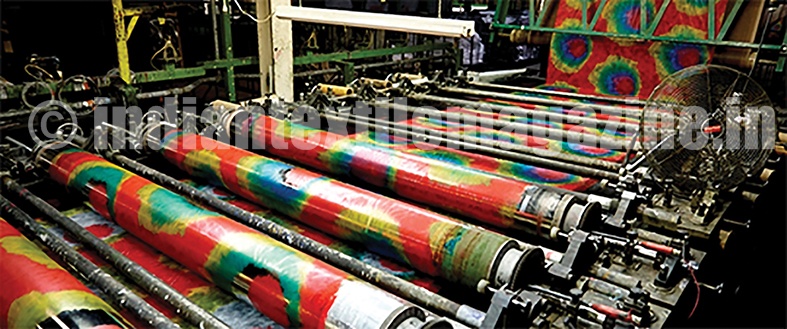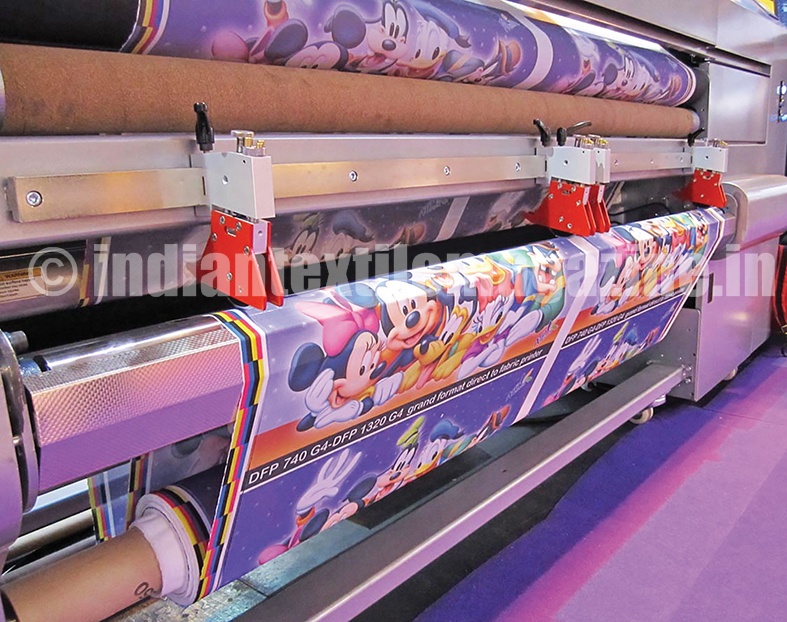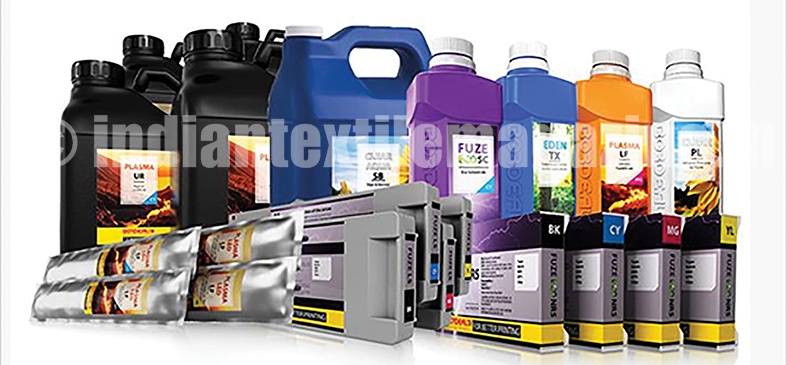Textiles and clothing has always been part of human culture. It was the Garden of Eden where man asked to be covered for the first time, and since then the clothing industry have come a long way. “Clothes make the man” as the popular saying goes.
The present-day range of fabrics is immense, from natural fabrics such as cotton, wool or silk to man-made fabrics based on polyester, polyamide and other human processed fabrics. The diversity of the fabrics as well as design was always intrigued by new looks ruled by different outfits and extravagant costumes which gave rise to the elaborate fashion industry of today. The fast pace fashion industry takes advantage not only of the great fabric variety but also of the textile printing possibilities which were not always readily available as they are today.
Evidence of textile printing was found in China and among the Incas in Peru in the first century. In Europe printed patterns on textiles were introduced much later due to the difficulty in achieving durable printing, which does not fade or wash off. It was not until the development of a durable dying stuff that enabled the first printing of patterns on textiles to emerge.
The initial method used was rather primitive and done by hand. The method of wood blocking in which the pattern in engraved on a wooden block was the first attempt to print patterns on cloth and it is still employed today in some places in India and in Asia.
The first successful attempt to mechanically print on a fabric was achieved by an engraved cylinder machine which used copper rollers to print on the fabric. The mechanized system, though with its disadvantages, made the printing process cheaper by relying less on expensive labor. Unfortunately, the company building these machines went bankrupt, but the process was a major breakthrough in textile printing enabling 6 color printing and set the ground for the methods that followed.
The next attempt to improve printing on textiles was done in mid-19th century by stencil printing in which a stencil was made according to the pattern which needed to be printed. The stencil was usually of a thin metal material with recesses in it in the shape of printed pattern. The recesses enabled the ink or paste to be pushed onto the fabric and achieve the design. The first stencils were done flat and later were mounted on a cylinder roller which revolved continuously on the fabric.
All these methods were actually the preface to the most popular printing method most common for textile printing and used until today – rotary screen printing. Although this is an efficient and cost effective method, it does have major drawbacks, especially in the current fashion marketplace. Preparing the pattern takes time and costs money. This has to be taken into account in the pricing of the final product. Furthermore, setting up the printer results in high downtime of the machine. Adding it up, screen printing is the ultimate solution for high volume production but not for short runs.
The fashion industry is becoming more and more demanding and lurking for creative and unique opportunities. In order to persevere and meet consumer demands, the need for more diversity led to shorter printing runs. The same process occurred previously in the signage and graphic arts and trickled also into textile and fashion. A decade ago, fashion brands, fashion designers and store owners showcased only two collections per year. The transition in the market in recent years dictated introduction of new items throughout the season. This shortens the life span of the items and requires the industry to adapt and react faster with more fashion items but in small volumes. Even global retailers offer limited edition items and many fashion brands work in 3-month cycle. This is true for fashion and apparel and also for home textile retailers who change their collections rapidly and offer a wider selection of designs. All manufacturers agree that diversity comes in place of quantity.
The rapid change in the market required a solution. As in the case of signage, the solution lay in the adaptation of digital printing also for the textile printing market. However, digital printing was not focused on textile and did not offer a plausible solution for printing on textile. The emergence of mass customization in textiles urged digital printer manufacturers to seek a solution. A solution that can change the marketplace and keep up with the continuous need for smaller quantities yet higher quality production that can be implemented in smaller production space and minimum setup time.
A few companies started introducing the digital textile printer equipped with the common piezo printhead. These new printers enabled immediate textile sampling but not commercial printing since the speed was a major issue. More recent textile printers have improved the speed significantly. However, speed is still a great problem since the ink drying process is more complicated on textiles compared to paper and other common substrates used in signage. Digital printing manufacturers who introduced textile digital printers realized soon after that the main obstacle for textile digital printing is the ink.
The inks used in digital textile printing are mostly dye based, with strong affinity to the fibers but are limited in the types of fabrics since each fiber requires a different type of dye. Reactive dyes are suited for cotton fibers while disperse dyes are only suited for polyester fibers. The list gets longer for other types of fibers.
The specific affinity of the inks to a certain fiber resulted in a very distinct specialization process within digital textile printing houses. Once a printing house gains experience with printing on a specific fiber, it usually adheres to printing with a single type of fabric and achieves a high degree of expertise in the process. However, this specialization inhibits customers from printing other fabric types in a single place.
One of the main advantages of digital printing is its flexibility. This does not concur with digital textile printing.
The limitation of dye-based ink led to the development of pigmented ink for digital textile printing. Pigment inks eliminate many of the fibers particularity associated with dye-based inks and enable printing on a wider variety of fibers, especially blended fabrics. These inks also feature higher light fastness, wash and rub resistance. Wider variety, higher durability and a simpler post-treatment process made pigmented ink the main ink used in textile digital printing.
However, unlike a dye-based ink, pigmented ink does not have the strong affinity to the fabric. Yet it still requires a pre-treatment and in some cases also a post-treatment. With lack of affinity to the fiber, adhesion is obtained by the binder, a co-polymer. The binder is a very crucial component of every pigmented ink and determines many of its characteristics. The binder must be compatible with the ink components such as its dispersants and additives and must also be compatible with the fabric’s fibers. It is again the binder that fixes the pigment to the fabric.
Many companies have been trying to overcome the limitations of both dye ink and pigmented ink which prevented digital textile printing from becoming a dominant force within the overall textile printing industry. The solution for the ink quandary seems to have been resolved by Bordeaux Digital PrintInk, an Israeli-based inkjet ink developing company that specializes in inkjet solutions for digital printing applications. The company offers a pigmented-based digital textile ink suitable for all fabric types and a simple one-step pre-treatment with no chemical post-treatment.
In addition, Bordeaux is offering the ink with full compatibility to most common printheads such as the Kyocera, Ricoh Gen 5, Konica Minolta and the Epson DX series. The ink is pigment based, but the company claims that unlike other pigmented inks the ink renders the fabric soft and easily suitable also for clothing and fashion.
The new inks have the highest degree of durability of 5/5 in wash and rub resistance. The ink is suitable for a wide range of fabrics, including mixed and blended fabrics, and for the first time offers a true solution for digital printing on short-run applications.
A new pigmented ink that can print on all fabrics is truly a breakthrough in digital printing. The combined solution for digital printing, including a textile printer and a compatible ink that enables printing on a large number of fabrics, hastened the digital printing penetration into textile and fashion. The embracing of digital printing on textile is the driving force for the fashion industry and contributes to shaping not only the textile industry as a whole, including fashion, but also the home décor and interior designing markets which can offer bountiful opportunities for personalized designs.



